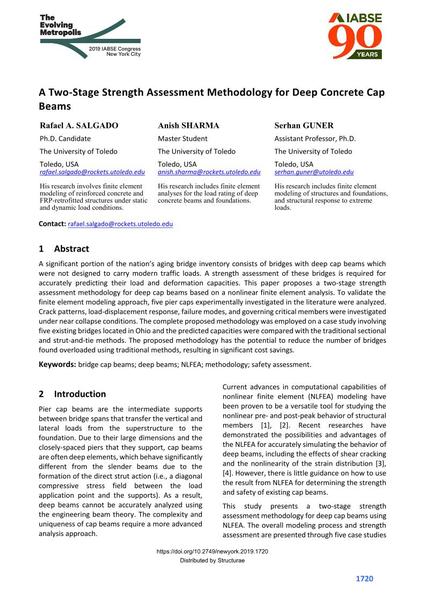A Two-Stage Strength Assessment Methodology for Deep Concrete Cap Beams

|
|
|||||||||||
Bibliografische Angaben
| Autor(en): |
Rafael A. Salgado
(The University of Toledo)
Anish Sharma (The University of Toledo) Serhan Guner (The University of Toledo) |
||||
|---|---|---|---|---|---|
| Medium: | Tagungsbeitrag | ||||
| Sprache(n): | Englisch | ||||
| Tagung: | IABSE Congress: The Evolving Metropolis, New York, NY, USA, 4-6 September 2019 | ||||
| Veröffentlicht in: | The Evolving Metropolis | ||||
|
|||||
| Seite(n): | 1720-1725 | ||||
| Anzahl der Seiten (im PDF): | 6 | ||||
| DOI: | 10.2749/newyork.2019.1720 | ||||
| Abstrakt: |
A significant portion of the nation’s aging bridge inventory consists of bridges with deep cap beams which were not designed to carry modern traffic loads. A strength assessment of these bridges is required for accurately predicting their load and deformation capacities. This paper proposes a two-stage strength assessment methodology for deep cap beams based on a nonlinear finite element analysis. To validate the finite element modeling approach, five pier caps experimentally investigated in the literature were analyzed. Crack patterns, load-displacement response, failure modes, and governing critical members were investigated under near collapse conditions. The complete proposed methodology was employed on a case study involving five existing bridges located in Ohio and the predicted capacities were compared with the traditional sectional and strut-and-tie methods. The proposed methodology has the potential to reduce the number of bridges found overloaded using traditional methods, resulting in significant cost savings. |
||||
| Stichwörter: |
wandartige Träger Methodik
|
||||
